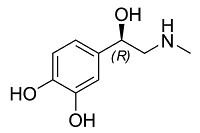What You Kneed to Know About Your Knees
Living in Bozeman there is a good chance that in your garage there are a pair or skis or a snowboard, bikes, fishing poles, rifles, backpacks, hiking boots, snow shoes and various other pieces of recreational equipment. That’s why we live here, to get out and enjoy the great outdoors when we have those precious moments of recreation. In order to be able to enjoy using all the fun stuff we have acquired we need to make sure we keep our bodies healthy and pain free.
An area of common injury is the knee. It is in essence a hinge joint between the hip and the ankle allowing your legs to act like springs to bounce you down the road of life. The knee joint allows for a great variety of biomechanics to move your body in many different ways that are essential for adaptation to our environment and our activities of daily living. The legs of our body contain the biggest, strongest muscles, which help us create power for our movements and also help stabilize our pelvis to keep the upper portion of our body stable as well.
Muscles move bones; bones don’t move muscles, that is a fact of nature. Muscles are controlled by nerves, which can be affected by bones. It is just like the rock, paper, scissor game; one thing can affect the other making it a big puzzle sometimes. There are seven muscles that cross the knee joint and all are very important for proper mechanics to take place. The big muscles that cross the knee are the quadriceps, hamstrings, and the gastrocnemius. The smaller muscles that cross the knee joint are the sartorius, gracilis, poplitius, and a very small muscle called the genu articularis (genu means knee in latin). When a knee moves from a bent position to a straight position, there is a proper firing sequence of the muscles that must take place. First the little poplitius muscle contracts to rotate the tibia under the femur. Next the quadriceps muscle fires to straighten the leg, and then the three smaller muscles, the sartorius, gracilis and one of the hamstring muscles the semitendinosis which all attach at the same spot on the inner front aspect of the knee, contract together creating a tripod which locks the knee in place creating a very strong stable structure for support of your body.
Many of the knee injuries that occur are to connective tissue components of the knee; the ACL (anterior cruciate ligament), PCL (posterior cruciate ligament), MCL (medial collateral ligament), LCL (lateral collateral ligament), or the meniscus, a soft spongy material between the femur and the tibia. These connective tissues become injured when the knee is unstable causing abnormal forces to be put on the ligaments, or from too much force as a direct result of trauma. Once those injuries occur rehab and healing often require medical intervention or surgery. The best medicine is always prevention.
To understand prevention of knee injuries we have to take a step further in our understanding of the muscles of the knee. Remember that muscles only contract when a nerve signal innervates the muscle and causes a contraction to take place. Muscles work like ratchets, as the muscle cells get the appropriate nerve signal, the cells pull together shortening the tissues, and then they release the contraction following another chemical signal in the muscle. The appropriate neurological signal to the muscle however can be short circuited by different things in our body, creating that instability and predisposing us to injury.
These short circuits often come from common neurological pathways that the nerves share. Every nerve (like an electric wire) comes off the spinal cord at different spinal levels and branches out in the body, with some branches going to muscles and other branches going to organs. When explaining this I like to use the example of what happens when a person has a heart attack. Often times a person feels pain in their left arm when having a heart attack, not in their heart, even though that is where the problem is. As pain is a neurological signal it is interpreted in the brain. Because of the common neurological pathways between the heart and the shoulder muscle the subscapularis, the pain of a heart attack is often felt in the left arm.
Every muscle of your body has common pathways that are shared with organs, called viscerosomatic relationships. There are also psychosomatic relationships where thoughts and emotions can create different physical responses in the body too. The muscles of the knee have some very interesting relationships with organs. The quadriceps relate to the small intestine, the hamstrings relate to the large intestine, the popliteus relates to the gall bladder, and the sartorius, gracilis and gastrocnemius all relate to the adrenal glands. Therefore sometimes knee problems can be affected by digestive problems or by hormonal relationships with stress and the adrenal function.
Understanding the relationships of the muscles to the different organs allows us to further be preventative of knee injuries by keeping our bodies healthy, or help us to heal faster if we are injured and can identify the cause of the instability of the knee. The key to knowing whether a muscle is getting an appropriate nerve signal is through simple manual muscle testing done by a trained physician or therapist. Manual muscle tests are done in the muscles shortest strongest position to see if they can hold strong against resistance. When the muscle holds it is a good neurological test, when it cannot hold it indicates there is inappropriate signaling from the nervous system to the muscle. These neurological signals can be up regulated and facilitated by appropriately stimulating the nervous system once the cause of the weakness is determined either structurally, physiologically, mental and emotionally, or through the acupuncture meridian system of the body. This is how applied kinesiology has developed into a world wide healing system that produces very effective results.
Knowing that the human body is very complex, it can sometimes seem overwhelming to try and put it back together. The most wonderful thing about the human body is how adaptive it can be and how well it can heal when given the appropriate stimulus, and the inappropriate stimulus is removed. Knee health is a combination of appropriate training to keep your leg muscles strong, healthy digestive systems, and healthy adrenal glands adapting to and handling the stresses of everyday life. Live healthy, live naturally, and live optimally and you to will have healthy knees too.


